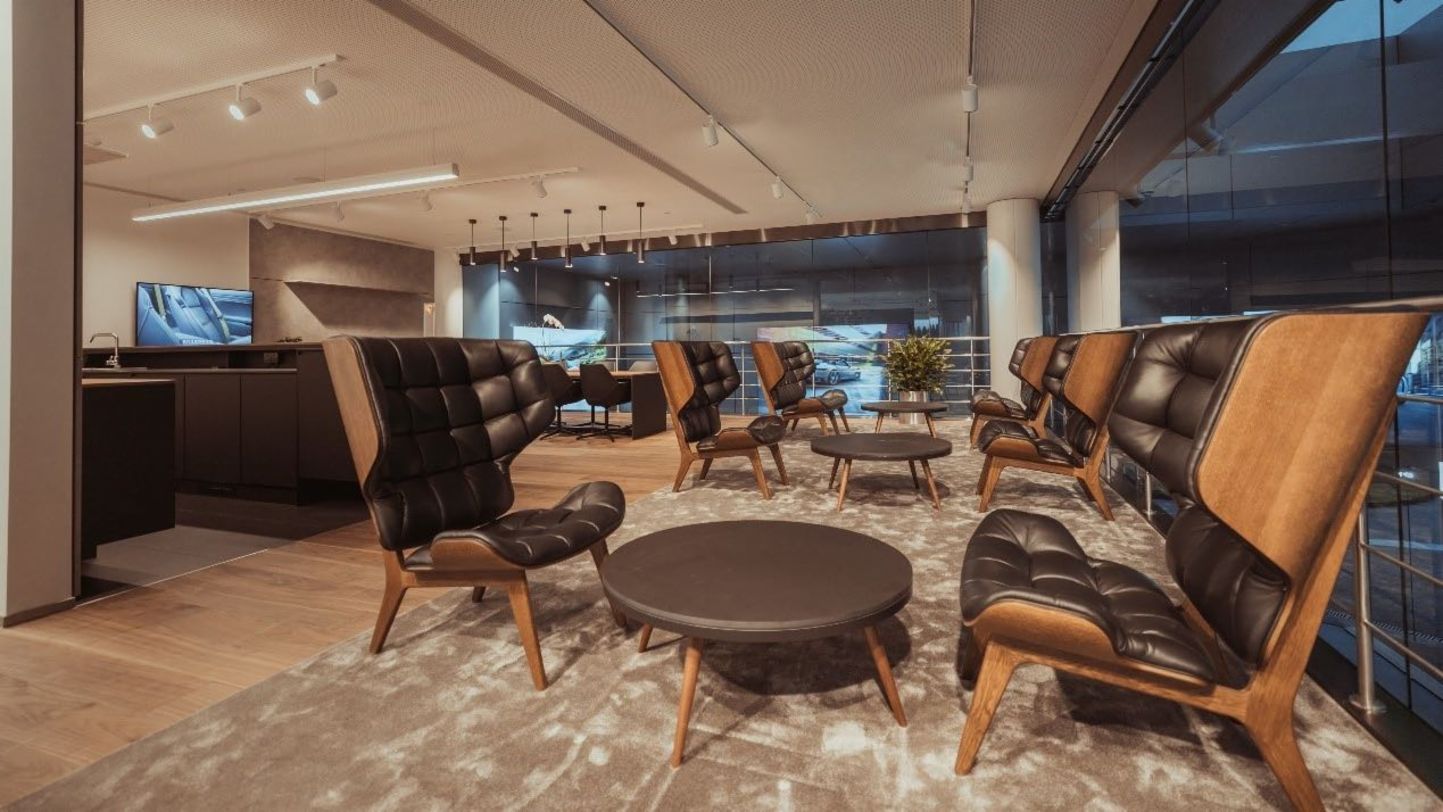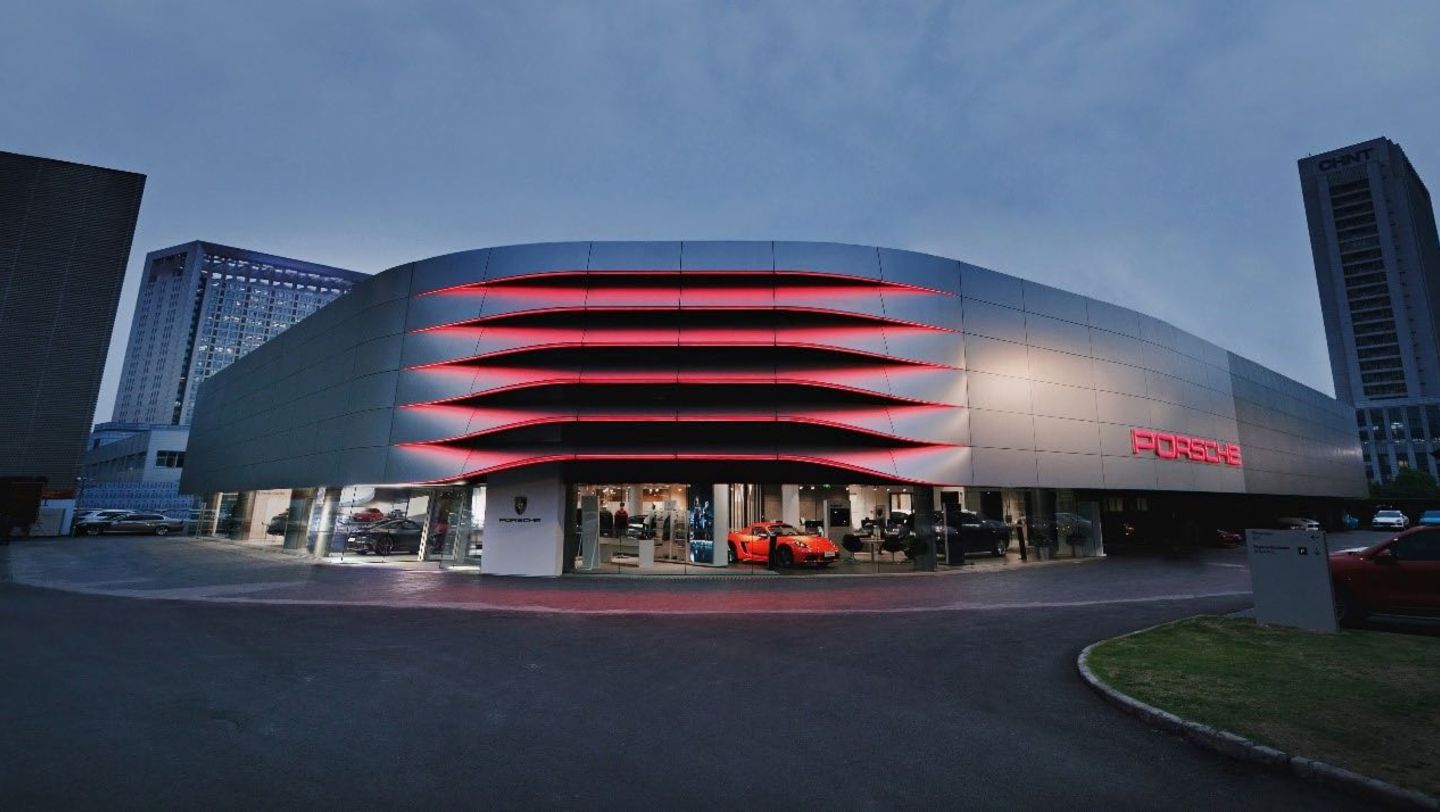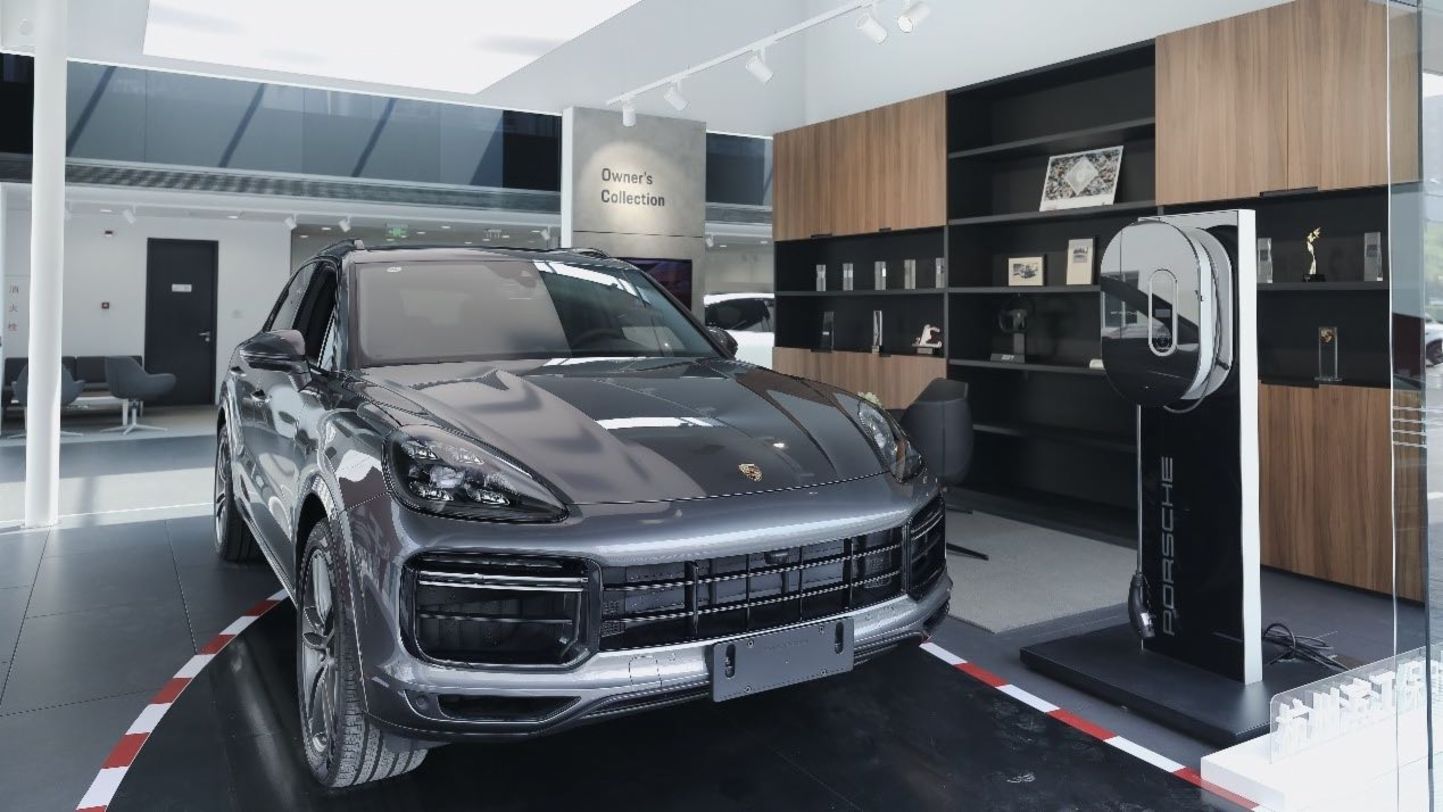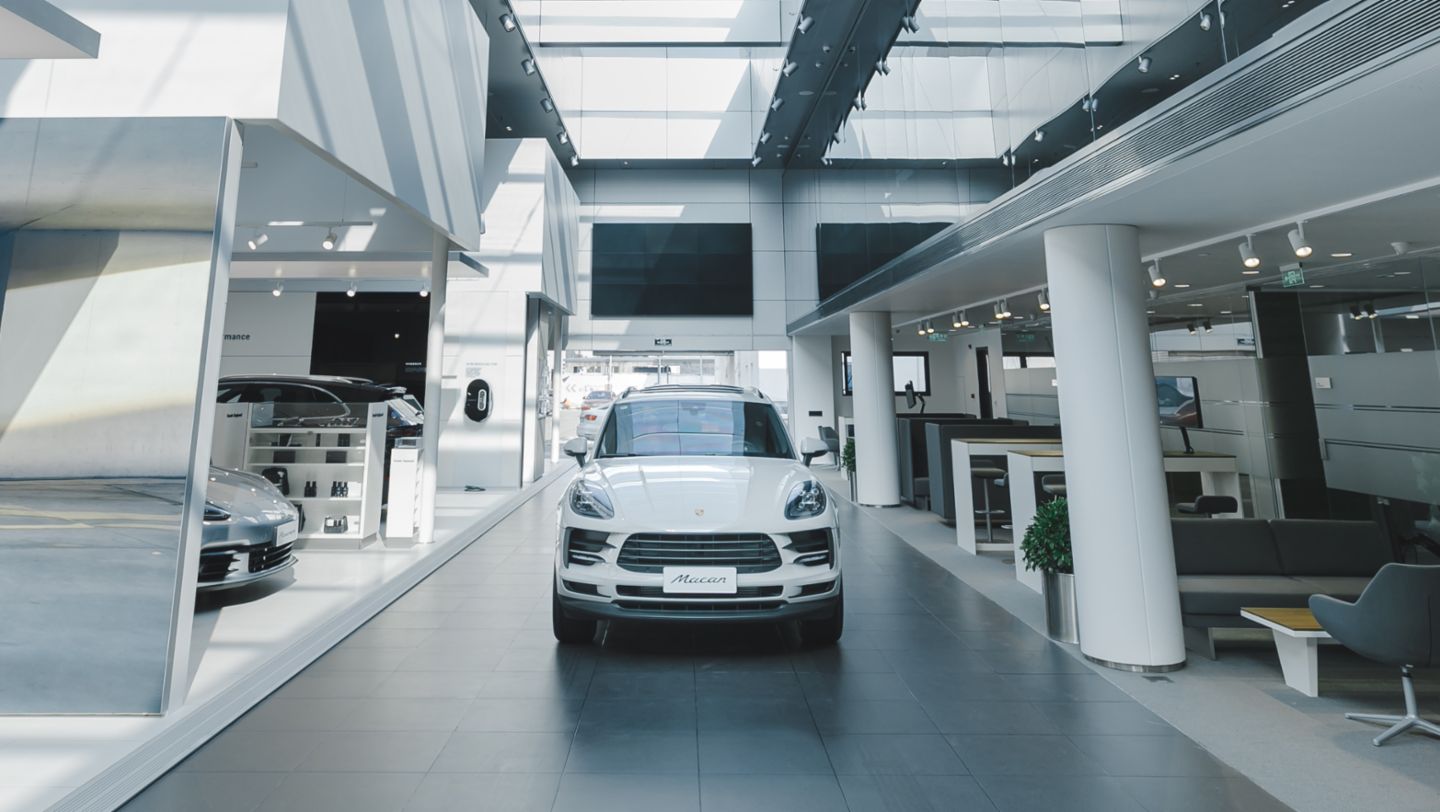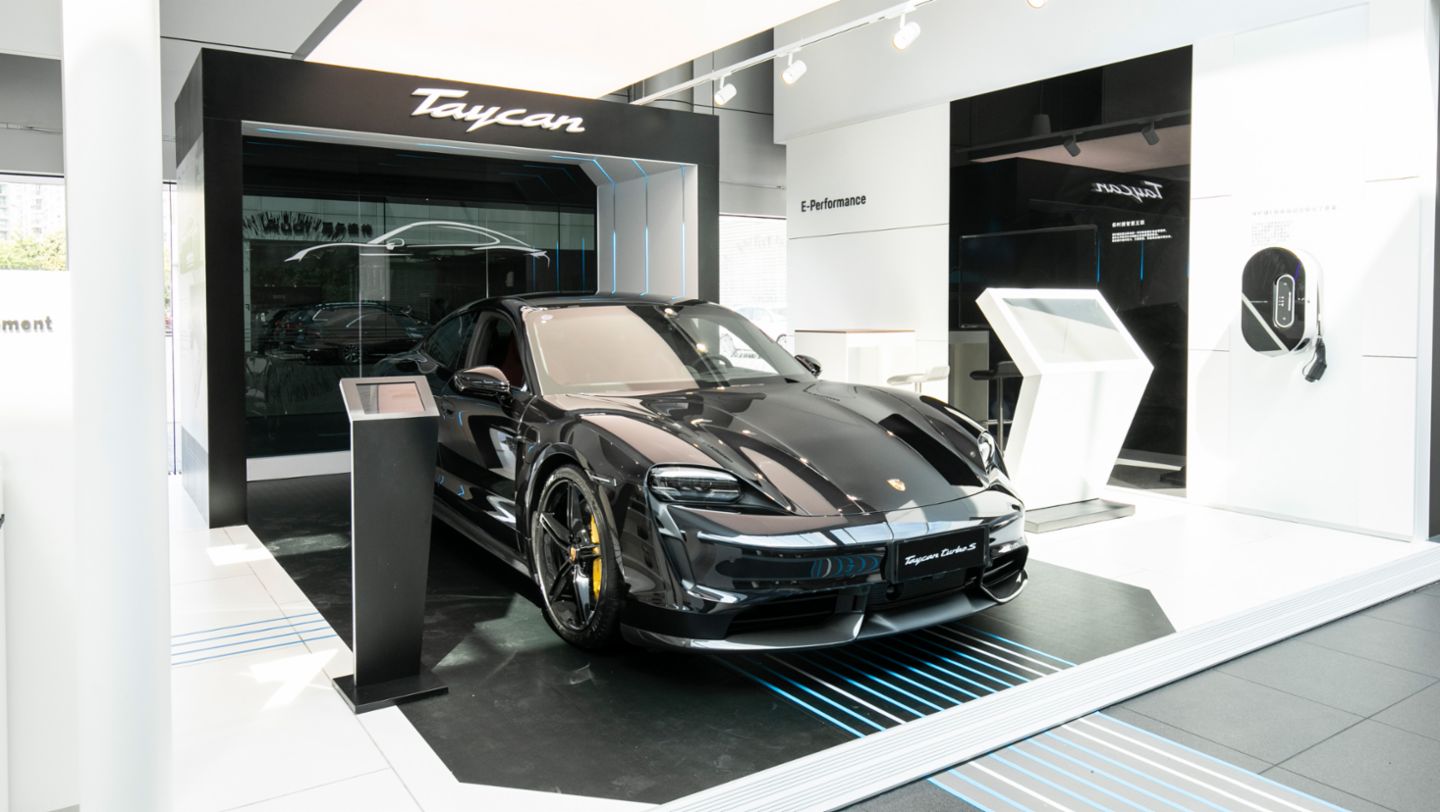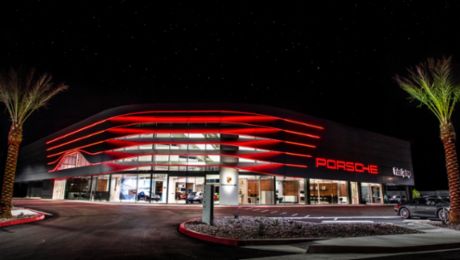The new concept is characterised by its emphasis on brand experience and inspiration, its flexibility and use of digital media for individualised communication. A central part is that dealerships are intended to become a central gathering place for the Porsche community, appealing to current as well as new customers. Over the next decade, the concept will be implemented on 850 existing Porsche Centres worldwide.
Due to the corona crisis, the re-opening of the Porsche Center Hangzhou took place as a special online event. The reopening also serves as a signal that both Porsche China and its dealerships have entered into the second phase of pandemic cooldown as business operations gradually return to normal.
The architecture concept reflects Porsche’s heritage and innovation. The exterior aluminum facade creates an inviting and eye-catching atmosphere at the entrance. Meanwhile, the interior design of dynamic racing lanes skillfully reinterpret the unique heritage of Porsche motorsport.
A flexible world with various themed modules
The customer journey through the dealership runs along various themed flexible modules, such as the Highlight Car, E-Performance and Fitting Lounge. As one of the core values, the "community" concept is incorporated into future Porsche Centres, with a newly created lounge area where customers and fans of the brand can come together. Instead of being a static exhibition, the scalability of the modular system enables new Porsche dealership to be altered and expanded in the future.
Digital means redefining customer in-store experience
“Destination Porsche” creates a digital world, which brings a seamless experience for customers. Virtual reality applications let customers virtually experience their own car configuration. Touch screens make the products and services of the Porsche brand come alive in an interactive way. Tablet-based vehicle acceptance process, E-signature, online payment and other digital approaches are also elevating the customer in-store journey to a new level. The digital solutions build up the individualized connection between customer and Porsche products.
Diversified retail formats bringing Porsche closer to customers
Currently, Porsche has 124 sales outlets operating in mainland China, Hong Kong and Macau. Apart from the Porsche Centres, Porsche China has presented other diversified retail formats in recent years, including the Porsche Studios that allow customers to explore the brand in a downtown digital showroom; the Porsche City Service Centres providing state-of-the-art after-sales services; and the Porsche Sales Pop-ups offering a mobile retail experience.

